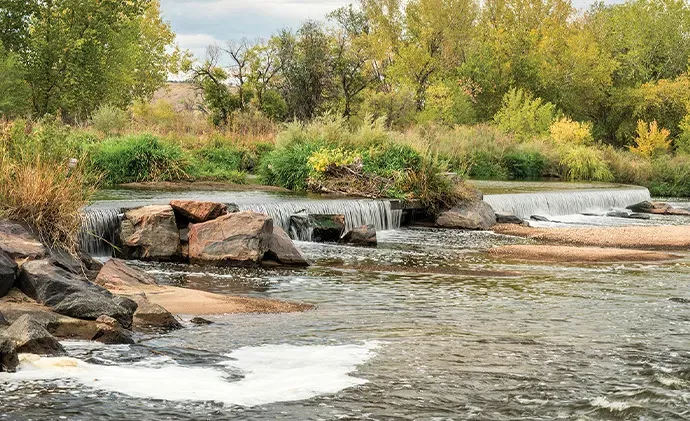-
 Phone:
Phone: -
 Email:
Email:

mesh rock retaining wall
The Benefits and Applications of Mesh Rock Retaining Walls
Retaining walls serve a crucial role in landscape architecture and civil engineering, particularly when it comes to managing sloped terrains. Among the various types of retaining walls, mesh rock retaining walls have gained significant attention due to their unique structure, aesthetic appeal, and versatility. This article explores the benefits and applications of mesh rock retaining walls.
What are Mesh Rock Retaining Walls?
Mesh rock retaining walls are structures made of a combination of wire mesh and large stones or boulders. The wire mesh often consists of galvanized steel or stainless steel, which provides strength and durability while allowing for air circulation and drainage. The stones or boulders are strategically placed within the mesh, creating a sturdy and visually appealing wall that retains soil and prevents erosion.
Benefits of Mesh Rock Retaining Walls
1. Erosion Control One of the primary functions of a retaining wall is to prevent soil erosion, particularly on steep slopes. Mesh rock retaining walls are highly effective in managing water runoff and stabilizing the soil, helping to maintain the integrity of the landscape. The spaces between the rocks also allow water to drain, reducing the pressure that can build behind traditional solid walls.
2. Aesthetic Appeal Unlike conventional retaining walls, which may appear monotonous, mesh rock retaining walls provide a natural and organic look. The use of natural stones allows the wall to blend seamlessly with the landscape, enhancing the visual appeal of gardens, parks, and other outdoor spaces. This aesthetic quality makes them a popular choice for residential landscaping as well.
3. Flexible Design Mesh rock retaining walls offer remarkable flexibility in design and construction. They can be built in various shapes and sizes to meet the specific requirements of a project. Whether it’s a small garden wall or a large-scale erosion control system, the customizable nature of mesh rock walls means they can be adapted to various environments.
4. Sustainability The materials used in mesh rock retaining walls are often more sustainable compared to traditional concrete or masonry walls. By utilizing locally sourced rocks and recycled materials for the mesh, these walls can lower the overall environmental impact of a construction project. Additionally, their ability to support plant growth within the rock crevices fosters biodiversity and enhances the natural habitat.
mesh rock retaining wall

5. Cost-Effectiveness While the initial investment in mesh rock retaining walls may be higher than some other options, their long-term benefits often outweigh the costs. The durability of the materials used means lower maintenance and replacement costs over time. Furthermore, their effectiveness in controlling erosion can prevent costly damage to surrounding structures and landscapes.
Applications of Mesh Rock Retaining Walls
Mesh rock retaining walls are utilized in a variety of applications across different sectors
- Residential Landscaping Homeowners often employ mesh rock retaining walls for terracing gardens, creating pathways, or as decorative features in their yards. They can add beauty while preventing soil movement, especially in hilly or uneven terrains.
- Commercial Developments In commercial landscaping, mesh rock walls are commonly used to define spaces, manage water flow, and enhance aesthetics. They can be employed in parks, plazas, and other public spaces to create visually appealing environments while fulfilling functional requirements.
- Infrastructure Projects Civil engineering projects frequently incorporate mesh rock retaining walls for infrastructure stability, especially in road construction and highway projects. These walls help support embankments and slopes, ensuring safety and longevity for transportation routes.
- Environmental Restoration In environmental conservation, mesh rock walls can play a vital role in restoring natural habitats. They can be used to create stable structures that promote the growth of vegetation, which in turn helps restore ecosystems and habitats for local wildlife.
Conclusion
Mesh rock retaining walls are not only functional structures designed to hold back soil but also aesthetically pleasing elements that enhance the environment. Their numerous benefits, including erosion control, sustainability, and cost-effectiveness, make them an ideal choice for a wide range of applications. As landscape designers and civil engineers continue to seek innovative solutions for managing land and water, mesh rock retaining walls will undoubtedly remain a popular and effective option.
-
Wire Mesh for Every Need: A Practical SolutionNewsJul.25,2025
-
Steel Fences: Durable, Secure, and Stylish OptionsNewsJul.25,2025
-
Roll Top Fencing: A Smart Solution for Safety and SecurityNewsJul.25,2025
-
Cattle Farm Fencing Solutions for Maximum SecurityNewsJul.25,2025
-
Affordable Iron Binding Wire SolutionsNewsJul.25,2025
-
Affordable Galvanized Wire SolutionsNewsJul.25,2025
-
Wire Hanger Recycling IdeasNewsJul.25,2025








